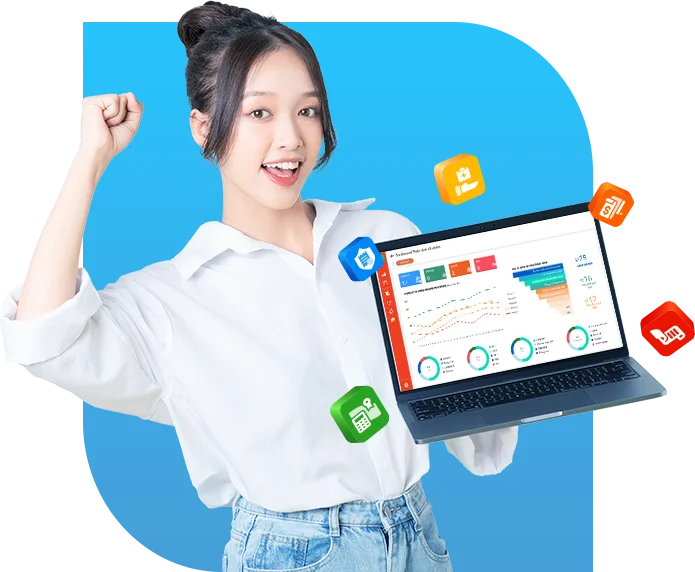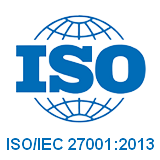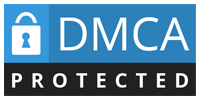In the context of economic volatility, the financial decisions based on accurate data, timely is a vital element of every business. Not only reflect the financial health current analysis of financial ratios also helps businesses evaluate the performance of operation, control risks, optimize development strategy.
This article Lac Viet Computing will help businesses understand the financial indicators, important analytical methods, and leveraging technology to optimize financial management.
The newspaper industry and related businesses:
1. Tổng quan về phân tích chỉ số tài chính
1.1 financial indicators what is?
Financial ratios (Financial Ratios) is the rate is calculated from data in the financial statements of the business to evaluate operating performance, profitability, liquidity, financial leverage, cash flow. This is important tool that helps managers, investors, shareholders and stakeholders have a comprehensive view of the financial health of the business.
Indicators of financial analysis is built on three types of main financial statements:
- Balance sheet accounting – provides information about the assets, liabilities, equity.
- Report business results – reflect revenue, expenses, profitability of the business during an accounting period.
- Statements of cash flows – present cash flow in – out, help businesses assess the solvency and investment.
Financial indicators not only the tools to analyze the past, but also helps to forecast trends in the financial support strategic decisions, optimize effective business management.
1.2 the Role of the analysis of financial indicators in assessing the situation enterprise
Analysis of financial indicators play an important role in the measurement reviews the financial situation, performance, financial risks of the business.
The key benefits include:
- Evaluating financial health: Financial indicators help businesses know they are in a state of financial stability or are facing the risk of losing financial balance.
- Support strategic decisions: Based on index analysis, businesses can adjust trading strategies, investment or capital mobilization fit.
- To attract investors, partners: Investors, banks often use financial indicators to assess the level of safety and growth potential of the business before deciding to invest or provide credit.
- Help compare financial performance between businesses: Financial indicators help businesses collate operational efficiency with competitors in the same industry to find the optimal strategy.
- Detect financial risks: Business can rely on trends in financial indicators to identify problems in terms of liquidity, profitability, repayment capacity before they become a big risk.
For example, if only the amount of debt on equity (Debt-to-Equity Ratio – D/E) increases, this may signal that the business is based on borrowed capital more capital, increases the financial risks.
2. Phân tích các chỉ số tài chính doanh nghiệp đem lại lợi ích gì?
Analysis of financial indicators not only help businesses understand the financial situation at present but also support the forecast financial trends, optimize management decisions. Here are the reasons businesses need to regularly analyze the financial indicators business.
2.1 Helps managers, investors, partners assess the financial performance
- Business managers use financial indicators to evaluate the performance, cost control, financial planning, long term.
- Investors consider the indicators of profitability, liquidity, financial leverage to decide whether to invest in business or not.
- Banks and credit institutions, analysis of solvency, cash flow, to grant borrowing limit, or adjust the interest rate consistent with the risk level of the business.
For example, if a business has net profit margin (Net Profit Margin) remained stable over 15%, operating cash flows, ocean, suggests the business is able to answer well, afford payment of financial obligations.
2.2 decision Support, strategy, risk control, optimization, profit
Businesses can use the index of financial analysis to adjust business strategy, financial to maximize profit and control risk.
- Adjusted financial model: If the debt ratio is too high, businesses can consider raising equity capital or restructure debt to reduce financial risk.
- Manage cost effective: If operating costs increase faster than revenues, business can find a way to optimize costs or improve performance.
- Optimize cash flow: If operating cash flows continuous, businesses need to plan to recover the debt, or search for capital replacement to ensure business operations are not interrupted.
3. Phân tích chỉ số tài chính doanh nghiệp – 5 Nhóm và 15 chỉ số quan trọng
3.1 liquidity indicators – reviews solvency
Liquidity indicators is one of the most important indicators in analysis financial situation business help assess the likelihood of payment of the obligations short-term financing of the business. A business has just the good liquidity means that they have enough liquid assets to cover the debts, ensure business operations are not interrupted.
3.1.1 Chỉ số thanh toán hiện hành (Current Ratio)
Tỷ lệ thanh toán hiện hành xác định khả năng doanh nghiệp thanh toán các nghĩa vụ ngắn hạn bằng tài sản ngắn hạn.
Công thức tính: Chỉ số thanh toán hiện hành = Tài sản ngắn hạn/Nợ ngắn hạn
In which:
- Short-term assets include cash, accounts receivable, inventory, other current assets can be converted into cash within one year.
- Short-term debt includes the debt due within a year, such as bank loans, short-term, pay suppliers, tax payable, accrued expenses.
Meaning and how to evaluate
- If Current Ratio > 1, the business has enough assets to pay short-term debt, i.e., good solvency.
- If Current Ratio
- Index of payments, current best practice is located in the range 1.5 – 2.5, depending on the industry and the level of volatility of short-term assets.
Ví dụ: Một doanh nghiệp có tài sản ngắn hạn là 500 tỷ đồng và nợ ngắn hạn là 300 tỷ đồng, khi đó: Current Ratio ={500}/{300} = 1.67 – Chỉ số này cho thấy doanh nghiệp có khả năng thanh toán tốt đối với nợ ngắn hạn.
3.1.2 Chỉ số thanh toán nhanh (Quick Ratio)
Just some quick checkout help assess the ability to pay short-term debt that does not need to depend on inventory.
Formula
Chỉ số thanh toán nhanh = (Tài sản ngắn hạn – Hàng tồn kho)/Nợ ngắn hạn
Or:
Quick Ratio =(Tiền mặt + Khoản phải thu + Đầu tư ngắn hạn)/Nợ ngắn hạn
Meaning:
- If the Quick Ratio > 1, the business can pay short-term debt immediately without selling inventory.
- If the Quick Ratio
Ví dụ: Nếu một doanh nghiệp có tài sản ngắn hạn là 500 tỷ đồng, hàng tồn kho 200 tỷ đồng, nợ ngắn hạn 300 tỷ đồng, khi đó: Quick Ratio ={500 – 200}/{300} = 1.0 – Điều này có nghĩa là doanh nghiệp vừa đủ khả năng thanh toán nợ ngắn hạn nếu không tính hàng tồn kho.
3.1.3 Thanh toán bằng tiền mặt (Cash Ratio)
Tỷ lệ thanh toán bằng tiền mặt (Cash Ratio) đo lường mức độ thanh khoản cao nhất bằng tiền mặt, các khoản tương đương tiền.
Formula
Chỉ số thanh toán bằng tiền mặt = Tiền mặt + Các khoản tương đương tiền/Nợ ngắn hạn
The impact of cash flow to solvency
- If the Cash Ratio > 1, businesses have the amount of cash sufficient to pay the entire short-term debt immediately.
- If the Cash Ratio
3.2 indicator of financial leverage – assess the level of debt of the business
Indicator of financial leverage measure the level of business use debt to finance business activity, from which the evaluation of financial risks that businesses are facing. Businesses have high leverage are usually able to expand its operations more robust, but also facing the financial risk is higher when the economy fluctuates.
Only group of financial leverage includes only the amount of debt on total assets (Debt Ratio), only the amount of debt on equity (D/E Ratio), the index of ability to pay interest on the loan (Interest Coverage Ratio).
3.2.1 Chỉ số nợ trên tổng tài sản (Debt Ratio)
Tỷ lệ nợ trên tổng tài sản phản ánh mức độ sử dụng nợ để tài trợ cho tài sản.
Formula: Debt Ratio =Tổng nợ/Tổng tài sản
In which:
- Total debt includes short-term debt (pay suppliers, bank loans, short-term), long-term debt (bonds, long-term loans).
- Total assets include the entire current assets (cash, inventory, receivables), long-term assets (machinery, land, buildings).
Meaning and how to evaluate
- Debt Ratio > 0.5: Business use more debt to finance assets, synonymous with the level of financial risk is high.
- Debt Ratio
- Debt Ratio from 0.4 – 0.6 is generally considered ideal, depending on the industry business.
The influence of the ratio of debt to financial risk
- Debt Ratio can lead to the burden of interest on large borrowers, reduce the net profit, the ability to expand business.
- Debt Ratio low to help businesses maintain financial stability, but may limit growth due to lack of capital investment.
3.2.2. Chỉ số nợ trên vốn chủ sở hữu (Debt-to-Equity Ratio – D/E Ratio)
Tỷ lệ nợ trên vốn chủ sở hữu đánh giá mức độ phụ thuộc vào vốn vay so với vốn chủ sở hữu.
D/E Ratio = Tổng nợ/Vốn chủ sở hữu
In which:
- Equity includes capital contributed by shareholders, retained earnings of the business.
- Total debt includes short-term debt and long term debt.
Meaning:
- D/E Ratio > 1: Business use loan debt more than equity → high financial Risk.
- D/E Ratio
- D/E Ratio ideal, usually from 1.0 – 2.5 depending on the industry.
The safety threshold of D/E according to industry, business
| Industry | Threshold D/E safety |
| Industrial production | 1.5 – 2.5 |
| Banking, finance | 6 – 10 |
| Technology | 0.5 – 1.5 |
| Retail | 1.0 – 2.0 |
3.2.3. Chỉ số khả năng trả lãi vay (Interest Coverage Ratio – ICR)
Khả năng thanh toán lãi vay xác định khả năng chi trả lãi vay từ lợi nhuận hoạt động.
Formula
Interest Coverage Ratio = EBIT/interest Expense
In which:
- EBIT (Earnings Before Interest and Taxes) is profit before interest and tax, reflecting the ability to generate profits from business operations.
- Interest expense is the total amount the company has to pay for the loan in states.
Meaning:
- ICR > 3: Business ability to pay interest well, less risks of financial obligations.
- ICR from 1.5 – 3: Businesses can pay interest on the loan, but there is still a risk if the cash flow is affected.
- ICR
Business should maintain this indicator at the level of how much to safety?
- ICR optimal, typically from 3 – 5, ensure the business has enough profit to pay interest on the loan, are native to reinvest.
- If ICR under 2, enterprises need to consider reducing the debt ratio or improve profits to avoid the risk of losing liquidity.
3.3 index performance – Measurement effective use of assets
Metrics performance to help businesses assess the level of efficiency in using assets to generate revenue, including inventory management, debt collection, use the total assets. The index does not reflect only the productivity but also supports business optimization strategy, financial management, commissioning.
3.3.1. Phân tích chỉ số vòng quay hàng tồn kho (Inventory Turnover Ratio)
Vòng quay hàng tồn kho đánh giá tốc độ luân chuyển hàng hóa của doanh nghiệp.
Formula
Inventory Turnover Ratio =cost of goods sold (COGS)/{inventory average}
In which:
- Cost of goods sold (COGS – Cost of Goods Sold): direct Cost to manufacture or purchase goods sold in the period.
- Hàng tồn kho bình quân: Được tính bằng công thức: Hàng tồn kho bình quân = (Hàng tồn kho đầu kỳ + Hàng tồn kho cuối kỳ)/2
The meaning of only the number of revolutions inventory
- High index (>5 times/year): Business has rotation speed express freight, inventory management good.
- Chỉ số thấp (<3 lần/năm): Doanh nghiệp có hàng tồn kho cao, có thể gặp vấn đề trong tiêu thụ sản phẩm hoặc bị tồn đọng vốn.
- Chỉ số vòng quay hàng tồn kho lý tưởng thay đổi tùy theo ngành. Ví dụ: Ngành bán lẻ có thể đạt 8-10 vòng/năm do tốc độ bán hàng nhanh. Ngành sản xuất máy móc thường chỉ đạt 3-5 vòng/năm do chu kỳ sản xuất dài hơn.
3.3.2. Phân tích chỉ số vòng quay khoản phải thu (Accounts Receivable Turnover Ratio)
Vòng quay khoản phải thu Xác định khả năng thu hồi công nợ của doanh nghiệp.
Formula
Accounts Receivable Turnover = Doanh thu thuần/Khoản phải thu bình quân
In which:
- Net revenue: the revenue after deducting the discount, rebate, discount, returned goods.
- Khoản phải thu bình quân: Khoản phải thu bình quân = (Khoản phải thu đầu kỳ +Khoản phải thu cuối kỳ)/2
Evaluate the possibility of recovery of the debt of the business
- High index (>7 times/year): Business has a policy on debt collection, effective, less prone to misappropriation of funds.
- Chỉ số thấp (<4 lần/năm): Doanh nghiệp gặp khó khăn trong thu hồi công nợ, có thể đối mặt với rủi ro nợ xấu.
- The index average of 5-7 times/year is reasonable for the majority of industry.
3.3.3. Phân tích chỉ số vòng quay tổng tài sản (Total Asset Turnover Ratio)
Vòng quay tổng tài sản đo lường hiệu suất sử dụng tài sản để tạo ra doanh thu.
Formula
Total Asset Turnover = Doanh thu thuần/Tổng tài sản bình quân
In which:
- Net revenue: Total revenue minus the discount, rebate and refund.
- Total assets average: Tổng tài sản bình quân =(Tổng tài sản đầu kỳ +Tổng tài sản cuối kỳ)/2
Reviews effective use of assets in generating revenue
- High index (>1.5 times/year): Business use assets efficiently to generate sales.
- Chỉ số thấp (<1 lần/năm): Doanh nghiệp có thể đang gặp vấn đề trong tối ưu hóa tài sản hoặc sử dụng tài sản không hiệu quả.
- Optimal threshold, typically from 1.2 – 2.0 times/year, depending on industry.
Compare this indicator between businesses in the same industry
- Manufacturing enterprises have only the number of revolutions assets due to lower capital investment in fixed assets is large.
- Retail business or technology often have higher stats due to fewer fixed assets and revenue faster.
An example of just the number of rounds, total assets average by industry:
| Industry | Average indicator |
| Retail | 2.0 – 3.0 |
| Technology | 1.5 – 2.5 |
| Industrial production | 0.8 – 1.5 |
3.4 profitability index – Assessment of profitability
Group index-profits to help businesses evaluate the effectiveness generate profits from business operations, the level of use of assets, capital to maximize profit. The analysis of financial indicators this group to help businesses identify financial situation actual measure profitability and propose strategies to improve financial performance.
Four important indicator in this group include gross profit margin (Gross Profit Margin), margin net profit (Net Profit Margin), return on total assets (ROA) and return on equity (ROE).
3.4.1. Chỉ số biên lợi nhuận gộp (Gross Profit Margin)
Biên lợi nhuận gộp đo lường hiệu quả quản lý chi phí giá vốn hàng bán.
Formula
Gross Profit Margin = Lợi nhuận gộp/Doanh thu thuần×100%
In which:
- Gross profit = net Sales – cost of goods sold (COGS).
- Net sales = Gross sales – deductions (discount, refund, discount).
The meaning of the indicator gross profit margin
- Index high (>40%): Business has pricing strategy, good management, cost-effective production.
- Chỉ số thấp (<20%): Doanh nghiệp có thể đang gặp vấn đề với chi phí nguyên vật liệu, lao động hoặc quản lý sản xuất.
- The average is usually between 25% – 50% depending on the industry.
The influence of cost of sales to gross profit margin
- Cost of sales increased high → gross profit margin decrease.
- Cost optimal production, raw materials are controlled → gross profit margin increase.
3.4.2. Chỉ số biên lợi nhuận ròng (Net Profit Margin)
Biên lợi nhuận ròng phản ánh lợi nhuận ròng trên tổng doanh thu.
Formula
Net Profit Margin =Lợi nhuận ròng/Doanh thu thuần×100%
In which:
- Net profit = net profit after tax (Net Income).
- Net sales = Gross sales – discounts.
Evaluate the ability to create real profit after deducting all costs
- Net Profit Margin > 15%: Business profitable good.
- Net Profit Margin from 5% – 15%: Business profitable on average.
- Net Profit Margin
3.4.3. Chỉ số lợi nhuận trên tổng tài sản (ROA – Return on Assets)
Tỷ suất lợi nhuận trên tổng tài sản đánh giá khả năng sinh lời của tài sản doanh nghiệp.
Formula
ROA=Lợi nhuận ròng/Tổng tài sản×100%
Performance evaluation using assets to generate profits
- ROA > 10%: the Business using assets efficiently.
- ROA from 5% – 10%: average performance.
- ROA
Comparing ROA between the different professions
- The retail industry often have ROA is higher than the property is mainly inventory.
- The manufacturing industry has ROA lower due to fixed assets, big (machines, factories).
3.4.4. Chỉ số lợi nhuận trên vốn chủ sở hữu (ROE – Return on Equity)
Tỷ suất lợi nhuận trên vốn chủ sở hữu đo lường hiệu suất sử dụng vốn chủ sở hữu.
Formula
ROE = Lợi nhuận ròng/Vốn chủ sở hữux100%
Index of ROE reflects the financial performance of the business like?
- ROE > 15%: Business generated good returns on equity.
- ROE between 10% – 15%: average, can improve.
- ROE
3.5 money flow index – assess the ability to manage cash flow
Cash flow is the core element helps maintain business operations business stability guarantees, liquidity support financial decisions. Unlike profit – can be affected by the accounting policies, cash flow, denoting the actual amount that businesses can use. So, analyzing the money flow index to help businesses control good solvency, optimize cash flow, works to maintain sustainable development.
Analysis of these indicators help businesses have a clear view of the financial situation, from which to make decisions appropriate strategy for sustainable development.
3.5.1. Chỉ số dòng tiền hoạt động trên nợ ngắn hạn (Operating Cash Flow to Current Liabilities Ratio)
Dòng tiền hoạt động trên nợ ngắn hạn phản ánh khả năng thanh toán từ dòng tiền thực tế.
Formula
Money flow index operation on short-term debt = cash Flow from operations/current Liabilities
In which:
- Cash flow from operating activities (Operating Cash Flow – OCF) Is the cash flow to the fact that the business generates from business activities core, not including the investments or financial aid.
- Short-term debt Is the debt due within one year, including accounts payable, suppliers, interest on short-term loans, tax payable, accrued expenses.
Evaluate the possibility of payment from cash flow real
- Index > 1: Businesses have sufficient cash flow from operations to pay the whole debt short term → financial Situation safe.
- Index of from 0.5 – 1: operating cash Flows are not sufficient to pay off short-term debt, business can need support from other funding sources or optimize cash flow.
- Chỉ số < 0.5: Doanh nghiệp có nguy cơ gặp khó khăn thanh toán, cần xem xét lại manage your business cash flow hoặc cơ cấu lại nợ vay.
3.5.2. Chỉ số dòng tiền trên tổng tài sản (Operating Cash Flow to Total Assets Ratio)
Dòng tiền trên tổng tài sản đánh giá hiệu suất tài chính từ góc độ dòng tiền.
Formula
{Index cash flow on total assets} ={cash Flow from business activities}/{Total assets}}
In which:
- Cash flows from operating activities: Measuring the amount of cash the actual business created from the core activities.
- Total assets: the Total value of the assets of the business, including short-term assets (cash, inventory, receivables) and long-term assets (machinery, factory, real estate).
How to evaluate performance from the perspective of cash flow
- Index of > 0.2 (20%): Business has the ability to generate strong cash flow, optimize the use of assets to generate cash.
- Index from 0.1 – 0.2 (10% – 20%): performance create cash in average, need to improve asset management.
- Index
Compare the money flow index between the business
| Index | Meaning | The optimal level |
| Cash flow activity on short-term debt | Reviews solvency short-term debt with cash flow real | >1.0 |
| Cash flow on total assets | Measure the effectiveness generate cash from business property | 10% – 20% |
4. Lạc Việt Financial AI Agent – Hỗ trợ phân tích các chỉ số tài chính doanh nghiệp theo thời gian thực
Vietnam Financial AI Agent is BI solutions integrate artificial intelligence (AI) intensive for business in Vietnam. This tool not only analysis of financial statements but also have the ability to consulting, financial, forecast trends and make recommendations financial management smart.
Analyze financial data in real time
- Reporting system BI visual financial help businesses track the financial indicators as important as cash flow, profits, and liabilities.
- Direct connection with the accounting system and ERP, ensuring data is always updated immediately.
Dự báo xu hướng tài chính bằng AI
- AI automatically analyzes historical data, forecast, trends, revenue, profit, cost.
- Warning of financial risks, helping businesses avoid the situation of losing weight for finance.
For example, If AI to detect operating costs increased by 15% for 3 consecutive months, the system will alert and propose solutions to cut costs.
Hỗ trợ ra quyết định tài chính thông minh
- The proposed optimal scheme, cash flow, to help businesses maintain good liquidity.
- Support investment decisions to allocate budget to help businesses maximize financial performance.
App Vietnam Financial AI Agent in corporate finance
- Create financial reports automatically according to standard IFRS/VAS, support leadership decisions quickly.
- Analysis financial health, help business reviews, financial status in real time.
- Forecast financial risks and make recommendations, to help businesses avoid mistakes in financial management.
Lac Viet Financial AI Agent to solve the “anxieties” of the business
For the accounting department:
- Reduce workload and handle end report states such as summarizing, tax settlement, budgeting.
- Automatically generate reports, cash flow, debt collection, financial statements, details in short time.
For leaders:
- Provide financial picture comprehensive, real-time, to help a decision quickly.
- Support troubleshooting instant on the financial indicators, providing forecast financial strategy without waiting from the related department.
- Warning of financial risks, suggesting solutions to optimize resources.
Financial AI Agent of Lac Viet is not only a tool of financial analysis that is also a smart assistant, help businesses understand management “health” finance in a comprehensive manner. With the possibility of automation, in-depth analysis, update real-time, this is the ideal solution to the Vietnam business process optimization, financial management, strengthen competitive advantage in the market.
SIGN UP CONSULTATION AND DEMO
Analysis of financial ratios not only is an accounting tasks but also a strategic tool to help businesses control the financial and business decisions efficiently. Understanding the indicators of liquidity, financial leverage, operating performance, profitability, cash flow help businesses predict trends, detect risk, capitalize on growth opportunities.














